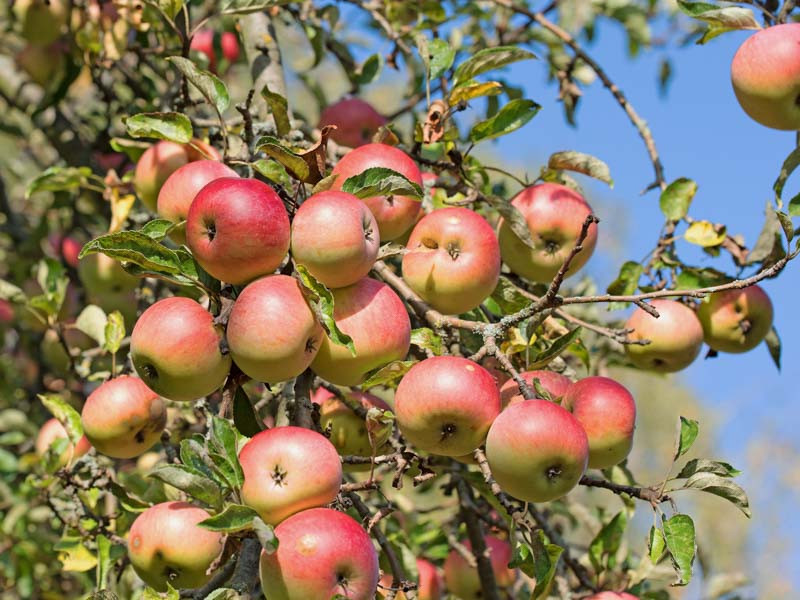Malus (Apple)
Habit: Apple trees, belonging to the genus Malus, are deciduous trees that typically range in size from 6 to 15 feet (1.8 to 4.5 meters) tall when grown in home gardens. Their branches often spread out, creating a rounded canopy adorned with simple oval leaves, finely toothed at the margins. Depending on the specific variety, they can be grown as standard, semi-dwarf, or dwarf trees.
Hardiness: Most apple trees thrive in USDA hardiness zones 3 to 9, though this can vary with specific cultivars. They prefer well-draining soil and require full sun, with at least six hours of direct sunlight daily, to produce the best fruit. To endure cold winters, apple trees require a certain number of chill hours, which vary depending on the variety.
Flowers and Bloom Time: Apple trees burst into bloom in spring, boasting fragrant blossoms that range from white to pink. These blossoms not only add ornamental value but are also essential for fruit production. The bloom time typically spans from early to late spring, depending on the variety and local climate.
Uses: The primary use for apple trees is fruit production. Apples come in a range of flavors, from tart to sweet, and can be used for fresh eating, baking, making cider, sauces, and more. Additionally, apple trees are often planted for ornamental purposes due to their charming spring blossoms and the shade they provide.
Benefits: Apple trees offer multiple benefits. Beyond the delicious and nutritious fruit they bear, they also support local ecosystems by providing food and habitat for various wildlife. The blossoms attract pollinators like bees and butterflies. Moreover, planting apple trees can be an excellent way to promote sustainable gardening, reduce grocery costs, and encourage a connection with the land.

